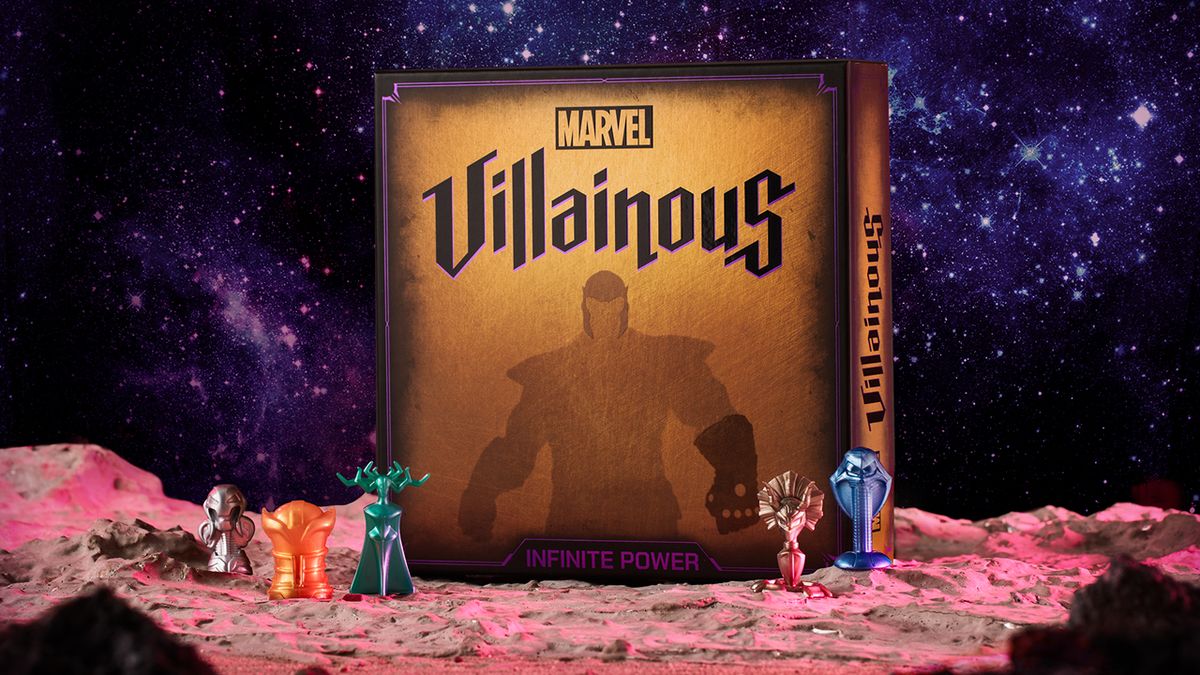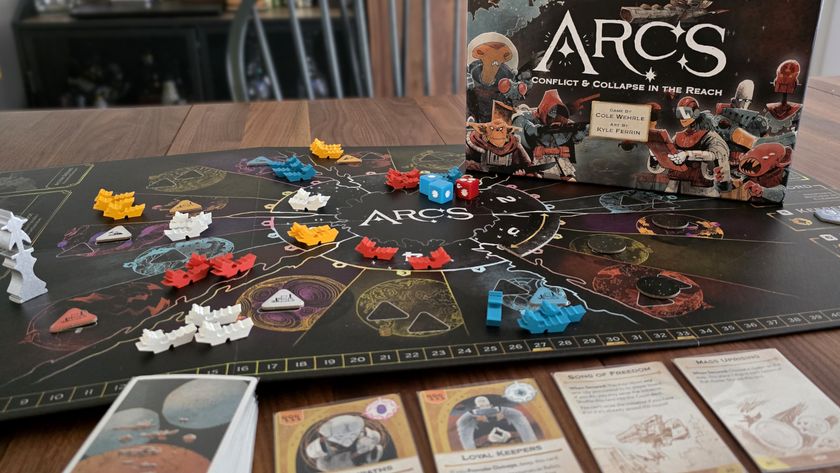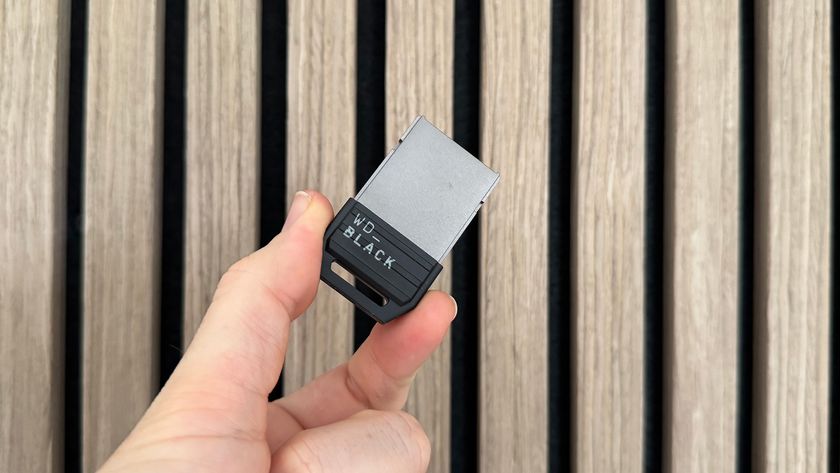12DOVE Verdict
An engrossing addition to the Villainous franchise that's tricky to learn but worth the effort.
Pros
- +
Unique mechanics
- +
Gorgeous artwork
- +
New Fate card system
- +
Memorable villain objectives
- +
Full of nods to the comics
Cons
- -
Can be overwhelming
- -
Events are a bit too hard
- -
Movers don't feel as high-quality
Why you can trust 12DOVE
On paper, Marvel Villainous is the perfect mash-up. The company's supervillains are some of the most iconic characters in the industry, so it makes sense that they'd get their own version of the Disney Villainous board game. Thanos, Hela, Killmonger, Ultron, and Taskmaster: it's a hell of a lineup. One of them snapped half the universe out of existence, another was immortalized by Cate Blanchett (need we say more?), and the rest co-star in some of the biggest films of the last few years.
However, they've got big shoes to fill. The original Villainous is one of the best board games out there, and it's been popular enough to spawn more than a few Disney Villainous expansions that are interchangeable with the original. This version is facing a tall order as a result… but you know what? It succeeds. Well, mostly. If anything, Marvel Villainous is a little too ambitious. That's not a sin by any means, but it does stop the game from one-upping its inspiration.
Avengers Assemble
If you're not familiar with the original strategy board game, Marvel Villainous lets you take control of comics' nastiest ne'er do wells in an effort to complete their objectives. Thanos must gather the Infinity Stones, for example, while Killmonger has to send out bombs to other players' boards. Because each character has their own unique goal, that means you'll need to scupper your opponents' plans in an effort to reach victory first. It was a cool idea when Villainous first came out a few years ago, and it's a cool idea now.
This isn't an expansion or sequel, though. That's because Marvel Villainous adds a few key elements that mean the two games can't be mixed. Namely: it introduces specialties, the ability to invade opponents' boards, and a new spin on the Fate deck.
Previously, each villain had their own Fate deck filled with do-gooder heroes and negative effects. If you wanted to upset your foe's carefully-laid plans, you'd draw some of these cards and place them on that player's board. But this Marvel-themed alternative is different. Instead of a Fate deck for each person, there's a collective pile that you all draw from (presumably to honor Marvel's love of crossover and the fact that these superheroes have gone up against all the villains at one point or another). That adds greater variety to the mix, especially because each character has a handful of special Fate cards shuffled into the deck that are more effective against them. Crucially, these heroes can only be removed if they're 'vanquished' by your minions.
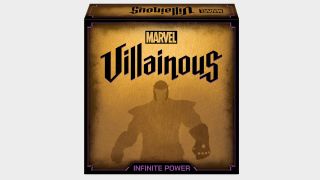
That's where Event cards come in. These are hidden within the Fate deck and affect one specific villain - or all of them. For instance, one might force you to draw no more than three cards for your hand, while another (dubbed 'Avengers Assemble') forces you to draw a Fate card against your own character each turn. These effects only stop when you've vanquished the card, much like a hero. Due to the fact that you receive a reward upon doing so, everyone will race to beat it first.
That's a lot to take in, and it's the first quibble I have with Marvel Villainous. Much like the original board game and other 'hobby' games like Arkham Horror: Final Hour, it can be overwhelming at first due to the many layers of gameplay you've got to navigate. The unique objectives are a blessing and a curse for the same reason; they provide plenty of replayability, yet each one takes a game or two to truly wrap your head around.
A-game
Events complicate this further. Even though you don't have to use them (they can be ignored in an easier game mode), they're still an extra barrier to entry for some. They sometimes feel unbalanced, too. More specifically, we drew the Avengers Assemble Event right at the start of our game and proceeded to get inundated with heroes that clogged up our boards. Sending Allies to end the Event became a slog due to this.
That said, Events are a great idea in principle. They aren't necessary to make Marvel Villainous stand out (the shared Fate deck already does that), but they do inject flavor into the game if you're already familiar with the original. They give you another thing to strategize for and battle over, and most force players to form a temporary alliance in the hope of overcoming them. That's welcome spice in what is otherwise a very competitive game.
Your objectives and the heroes that'll get in your way are equally memorable. Thanos has some of the coolest mechanics on display. When certain cards are drawn, an Infinity Stone will become attached to an opponent's Ally. Thanos must then send his minions to invade their board, defeat the Ally, and steal the stone. At the other end of the scale, the Hulk cannot be removed from the game in a normal fashion - he just gets stronger the more he's defeated, and beating the Jade Giant simply jettisons him to an opponent's board instead. The designers are on their A-game here.
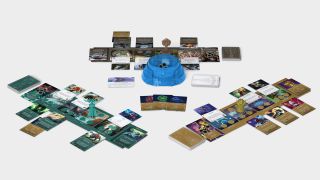
The artwork is equally impressive. Although it's not all up to the same standard as Disney Villainous and its rich, painterly scenes, many of the cards and boards are downright gorgeous; Hela's cards are particularly fantastic. What's more, the back of each deck has an intricate pattern inspired by its villain, while the movers are abstract and handsome. Sure, they feel a bit cheaper because they're not made from the same opaque plastic as the original Villainous. And yes, there's an odd mish-mash of locations inspired by the movies and comics that you may not recognize (I wish they'd gone all-in on the film-versions, to an extent). Yet that doesn't distract from the wealth of fan-service and nods to the source material. As with Disney Villainous, there's a clear love of the source material here - it shines through, papering over the cracks.
That's a win in my books. Marvel Villainous swung for the fences in a way it didn't have to, and I appreciate the effort. This is far from a cheap cash-in, and it's a clever next step for the Villainous franchise. Despite being flawed, Marvel Villainous lives up to the legacy.
Marvel Villainous: Mischief and Malice
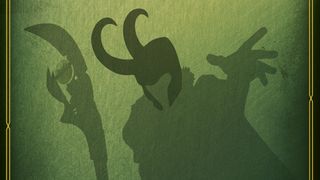
Even though the original game was hardly what you'd call a failure, Marvel Villainous: Mischief and Malice works to patch up any holes. Namely, it smooths out Events and offers slightly nicer movers with a more premium feel.
As an expansion that can be played on its own if need be (Ravensburger calls it an 'expandalone'), Marvel Villainous: Mischief and Malice offers three new characters with their own set of heroes to battle against. Loki, M.O.D.O.K, and Madame Masque are the stars this time around, and they all bring something special to the table that makes this pack worth considering.
Fresh from his own Disney Plus series, Loki joins the Villainous franchise in all his multiversal glory. The god has to gain and spend 10 'Mischief' points in order to win, and he sends alternate versions of himself (like Kid Loki or Lady Loki) onto other boards to chase those elusive tokens down. It's a cool mechanic that feels similar to yet distinct from the original game's focus on Thanos and the Infinity Stones; these alternate personas provide bonuses to their host, but they'll also give Mischief points to the player controlling Loki if activated. This results in a tricky conundrum should these variants wind up on your board. Do you use them to advance your own plans, even if it aids an opponent? I have some concerns that Loki is a little overpowered as a result, but there's no denying he brings something unique to the table.
M.O.D.O.K is also a fun addition to the game. He's got to build up Loyalty points with the A.I.M organisation and construct a Cosmic Cube for them, but vanquishing pesky heroes will lower that score. This forces you to plot and scheme a way of getting rid of distractions without sacrificing your A.I.M allies, and it's a cool idea that makes the character stand out.
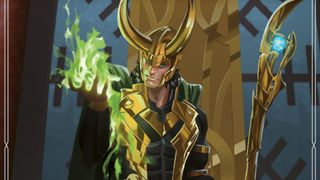
However, Madame Masque is arguably the most interesting newcomer aside from Loki himself. While the character is a Marvel comics deep cut, her mechanics set her aside as one of the most intriguing choices in the game.
As is only appropriate for an assassin, she weaponises the Vanquish action; offing heroes can count toward either a Vendetta score that wins her the game or a Contract that provides resources. Players have to choose one or the other, and because Vanquishing is the only way to gain Power tokens that can pay for her ability cards (there's no 'Gain Power' icon on her board), it leads to a real balancing act that feels fresh.
No matter who you choose to play as, each character is united by rather handsome movers. I can't put my finger on why, but they feel much nicer than the original Marvel Villainous equivalents.
Similarly, the artwork feels a lot more consistent this time around. The boards and cards play host to a painterly style and gorgeous blend of colors that really pop off the table. It feels more like what we've come to expect from the Villainous series.
The Events hit home more effectively this time as well. They're not perfect by any means (some can reduce Loki or M.O.D.O.K's score to the lowest amount, which is a bit harsh - particularly if you're close to winning) but they don't seem quite as punishing as they could be before.
As such, Marvel Villainous: Mischief and Malice is a return to form. It was a fairly unnecessary course-correction, sure, but it's one I'm grateful for nonetheless.

I've been writing about games in one form or another since 2012, and now manage 12DOVE's tabletop gaming and toy coverage. You'll find my grubby paws on everything from board game reviews to the latest Lego news.
